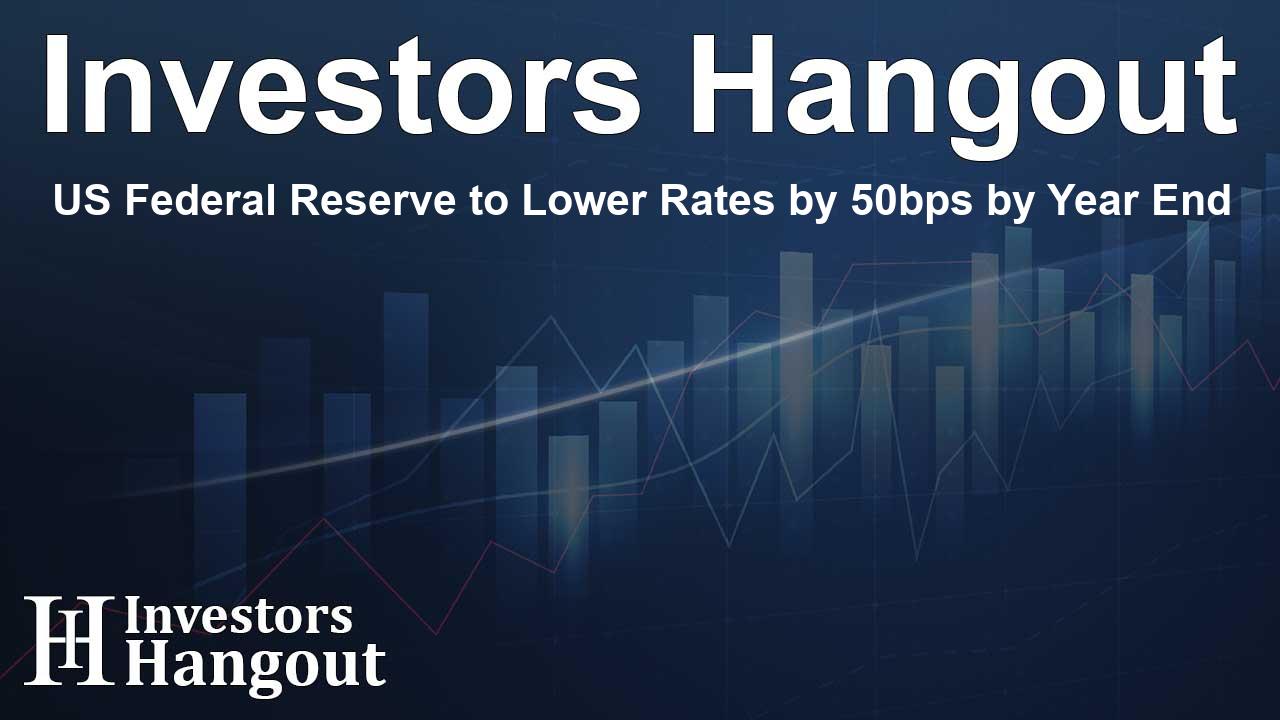US Federal Reserve to Lower Rates by 50bps by Year End

U.S. Federal Reserve's Rate Cut Expectations
A recent poll by Reuters reveals that a large majority of economists expect the U.S. Federal Reserve to lower the federal funds rate by 25 basis points in both November and December. This forecast is based on input from over 100 economists who participated in the survey, highlighting a common view on the central bank's direction for monetary policy.
Understanding Rate Cuts and Their Economic Impact
The Federal Reserve began its rate-cutting plan with a noteworthy half-percentage-point reduction. This decision underscores the Fed's commitment to not only sustaining low unemployment rates but also tackling inflation, which is gradually moving towards the central bank's target of 2%. Although the initial half-point cut was widely expected, it turns out that only a small number of economists had predicted it ahead of the announcement.
Scrutinizing Economic Performance
Despite the significant rate cut, uncertainty persists among economists regarding the clarity of the Fed's communications before meetings. Given the strong performance of the economy alongside a relatively low unemployment rate of 4.2%, the signals from the Fed are under examination. Survey results suggest that the Fed may be nearing a neutral interest rate level, which neither supports nor hinders economic growth, possibly by the end of next year.
Looking Ahead: Future Rate Cut Projections
The poll indicates that more than three-quarters of economists expect an additional 50 basis points reduction in rates this year. If realized, this would bring the target range to 4.25%-4.50%. This predicted adjustment aligns with median forecasts from the Federal Open Market Committee, intended to guide market behavior and shape economic expectations.
Economic Experts Share Insights
Sixteen economists are calling for a more aggressive approach to rate cuts, predicting a total decrease of 75 basis points this year, while a smaller group foresees a modest cut of 25 basis points. Moreover, expectations for future cuts include projections of another 50 basis points in the first quarter of next year, followed by additional adjustments.
Revising Economic Forecasts
Prominent experts, like David Mericle, Chief U.S. Economist at Goldman Sachs, are revising their forecasts based on recent actions by the Fed. They anticipate a faster pace of rate reductions that may lead to consecutive cuts from late 2024 into mid-2025. This trajectory aligns with my prediction of a terminal rate in the range of 3.25%-3.50%.
Deciphering the Fed's Neutral Rate
The Federal Reserve's long-term view indicates that the neutral rate is about 2.9%, but projections suggest that this level may not be reached until 2026. Analysts, including Oscar Munoz from TD Securities, voice concerns that unexpected changes in leadership priorities might force the Fed to revise its stance on rate cuts sooner if economic conditions shift rapidly.
Employment Rate and Market Responses
With the unemployment rate currently sitting at 4.2%, estimates point to a slight rise to 4.4% by the end of this year, with this rate expected to hold through 2025. Economic analysts indicate that unless unemployment exceeds the 4.4% mark, the Fed may opt for smaller cuts of 25 basis points. This strategy hints at a cautious approach to monetary policy amid ongoing economic fluctuations.
Assessing Fed Communications
When economists were asked about the Fed's communication strategies over the past few months, opinions were divided. Some acknowledged clarity in the Fed's messages, while others felt the communication was unclear. This discrepancy underscores the challenges of maintaining market confidence while navigating economic uncertainty.
Frequently Asked Questions
What rate cuts are expected from the Federal Reserve?
The Federal Reserve is expected to lower rates by 25 basis points in both November and December, possibly bringing the target range to 4.25%-4.50%.
How do the Fed's rate cuts affect the economy?
Rate cuts aim to stimulate economic growth and keep unemployment low by making borrowing cheaper and more accessible.
What does the Fed consider the neutral rate?
The neutral rate, according to the Fed, is around 2.9%, which is anticipated not to be reached until 2026.
How do economists view the Fed's recent communications?
Opinions vary; some economists find the Fed's communication clear, while others believe it lacks transparency.
What are the long-term effects of changes in the Fed's monetary policy?
Changes in monetary policy can influence consumer spending, borrowing costs, and overall economic growth, impacting both markets and investment decisions.
About The Author
Contact Logan Wright privately here. Or send an email with ATTN: Logan Wright as the subject to contact@investorshangout.com.
About Investors Hangout
Investors Hangout is a leading online stock forum for financial discussion and learning, offering a wide range of free tools and resources. It draws in traders of all levels, who exchange market knowledge, investigate trading tactics, and keep an eye on industry developments in real time. Featuring financial articles, stock message boards, quotes, charts, company profiles, and live news updates. Through cooperative learning and a wealth of informational resources, it helps users from novices creating their first portfolios to experts honing their techniques. Join Investors Hangout today: https://investorshangout.com/
The content of this article is based on factual, publicly available information and does not represent legal, financial, or investment advice. Investors Hangout does not offer financial advice, and the author is not a licensed financial advisor. Consult a qualified advisor before making any financial or investment decisions based on this article. This article should not be considered advice to purchase, sell, or hold any securities or other investments. If any of the material provided here is inaccurate, please contact us for corrections.
